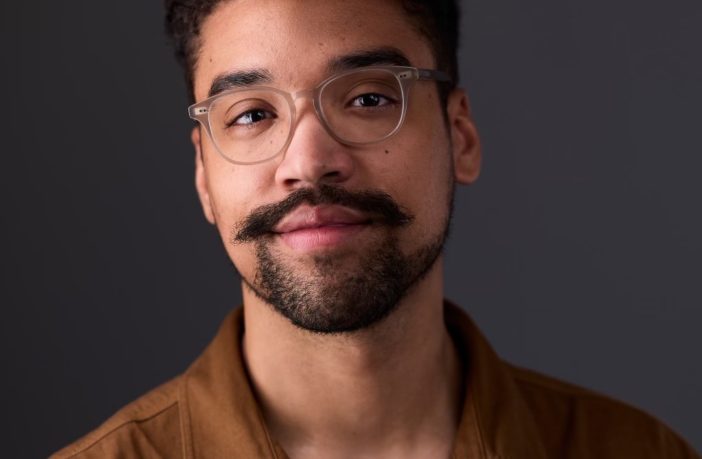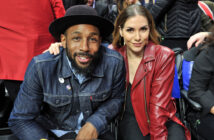In the world of photography, Pulitzer Prize-winner Jon Cherry stands as a beacon of storytelling through the art of observation. In an interview with EBONY, Cherry delves into his photographic philosophy, revealing how his heart guides his lens. From capturing the essence of violent protests to navigating the complexities of modern storytelling, Cherry shares insights into his journey as a photographer.
EBONY: What makes you stop and think: “this is something I need a photograph of”?
Jon Cherry: I think the things that make me stop and want to take a photo is an appreciation of a scene. Ultimately it comes down to, for me at least, why you stop and take a photograph is how you see it with your heart instead of with your mind. So sometimes you can go outside of what would be a traditionally “good photograph” and go for something that’s weird and off the wall. But it’s still very much you. I try to incorporate the art of observation and sharpen my observation skills into my practice.
Do you have a particular type or genre of photography that’s your favorite to look at?
I like photographers of all types. I love looking at pictures in general. So I’m totally down anytime somebody wants to show me a picture. I love the craft so much and I love contributing, or at least talking about the health of storytelling as a concept, like as a human concept. I find it to be very constructive to open your heart and be accepting of people who are interested in (photography) because you never know where they could be with it.
How did you discover photography was a passion for you?
I found it early on when I was probably eight. My father was a photographer when he was younger, like a hobbyist, and he was practicing photography at the advent of the first digital point-and-shoot cameras. He was a watchmaker, and he would sell his watches on eBay—and this was back in dial-up internet days, back when eBay was first coming out. He would take pictures and set up these little studios in his watch workshop, set the little camera up on a small tripod and take pictures of these watches with all the lights.
Then, when he was upgrading cameras, he let me borrow that one, and I would sit—I was really big into action figures when I was younger—I would make these stop motion sequences of these G.I. Joes. Sometimes, it would be two of them fighting each other, or they’d be climbing up something. I would scroll through the camera reel and I would show it to my parents, and I remember my mom being so impressed with this because I would spend hours and hours in my room with the door closed making these things. I think she was impressed at the dedication. That was really encouraging for me.
Do you ever get anxious going into an unfamiliar environment to take photographs?
I think that’s a really common anxiety for a lot of photographers is that whenever you pull out the camera, and you smash it up against your face, you are doing a completely different thing than everyone else who’s around, like you’re just there capturing stuff. Some people don’t want to be captured. People are wondering why you’re there. Who is this guy? Right? But then, I think that at the same time, the role of storytellers in our larger scope of humanity is not a new thing. It’s probably one of the things that humans were built for. For thousands and thousands and thousands of years, there have always been people who were elected to be the word-of-mouth connoisseurs who sit around the fire and give ceremonies and tell everybody about how the way things used to be, and it helps explain the world around them. I think that that still exists, but it has changed forms in the Western world. I think we have found some alternate ways to convey these past messages and try to explain the world around us.
How do you think you fit into the network of global storytellers?
I feel like I was elected to do this. I think a lot of evidence comes from my work doing the Breonna Taylor protests: that was my first entry into photojournalism, and I didn’t even know what photojournalism was. To me, photojournalism was like being an astronaut. How do you even do that? I have no idea. Whenever the protests started in Louisville, very quickly people responded and engaged with my work in a way that supported me directly. People were donating my money, leaving food on my porch, donating body armor, making sure that I had what I needed to go out and tell these stories. So I became this crowdfunded citizen photojournalist for a couple of months. I can’t thank the community in Louisville enough for elevating my work, encouraging me and inspiring me.
Protests in solidarity of Breonna Taylor’s tragic death in Louisville, Kentucky. Image: Jon Cherry/ Getty Images.
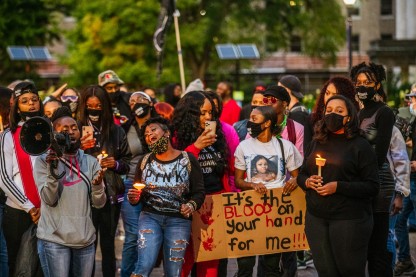
Protests in solidarity of Breonna Taylor’s tragic death in Louisville, Kentucky. Image: Jon Cherry/ Getty Images.
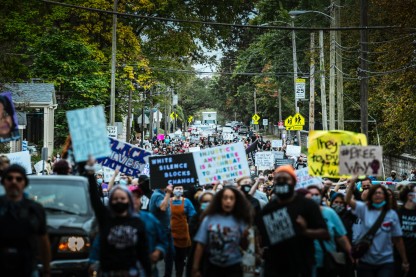
Protests in solidarity of Breonna Taylor’s tragic death in Louisville, Kentucky. Image: Jon Cherry/ Getty Images.
A lot of the Epic Black Image series focuses exclusively on art. Your photography is undeniably art, of course, but there is also a theme of mainstream U.S. politics, from capturing images of Breonna Taylor protests, to life during the COVID-19 pandemic. When you’re at the scene of a protest, or the aftermath of a disaster, how do you balance getting an “artistic” photograph and maintaining the authenticity of what’s happening outside the camera’s lens?
There’s a lot of talk within this industry, like documentary work about what “truth” is, right? Is there such a thing as objectivity, or is there such a thing as truth? I personally don’t think that objectivity is real. I think it’s a healthy goal to strive for. I think that we are all laden with biases and I think that if you interrogate those, you are doing the good work. I try to interrogate those biases and sometimes I want to prove myself wrong. The Breonna Taylor protests were an example of me wanting to express my own curiosity, at the time, at the beginning of 2020. It was a pretty hectic year. It was a bad time for black folks. On May 25th, we watched George Floyd be murdered on television over and over and over and over again. And I was heartbroken, angry, and felt like I didn’t have anywhere to turn. We hear about these kinds of extrajudicial police killings happening all the time. Breonna Taylor was the real kicker because they busted down her door and shot the place up while she was chilling in the house in the middle of the night. So, I was just as inspired to take to the streets as everyone else was. I wanted to contribute in some way, and I wanted to show how other people felt about what I was feeling.
You won a Pulitzer for your photographs of the Jan. 6 attack on the U.S. capitol—what was it like being in that tumultuous (and eventually violent) crowd?
I’ve always been interested in extremism. I never really had a vehicle to bring me into those circles or those spaces, and so I was introduced to some extremist groups during the (Breonna Taylor) protests in Louisville. I’d never really seen that before. Through my connection and understanding with those folks at the height of the Trump campaign, and then whenever Trump lost the election in 2020, some of the online channels that I was a part of began talking about what they were going to do to retaliate.
Everyone that was there (on Jan. 6) was dressed for violence. There was a general air of aggression. Walking through the crowds, there were people I saw who were aggressive with me; they were either trying to grab hold of my stuff, spitting on me, or pushing me whenever the riot actually started. And it was, as we know, it was an incredibly violent day. There were a lot of members of the journalism community that were assaulted that day. I was very lucky that the physical transgressions that I underwent were relatively minor. It was a cacophony of screaming and shouting, flash bangs going off, various types of crowd dispersal, wasp spray, bear mace and tear gas that were just being used pretty much nonstop throughout the entire riot.
You asked earlier if I was afraid. And I find that very often, whenever I’m photographing, I move into a higher plane of my own psyche, where those kinds of emotions, like fear and anger and sadness, don’t really exist. I don’t want to say numb, but I feel like those emotions are happening within someone that’s separate from me. And so it’s really after any of these things happen, is my opportunity to process it all. Part of it is because if I had if I had been able to express how I truly felt during it, I would have been curled up in a ball crying, right?
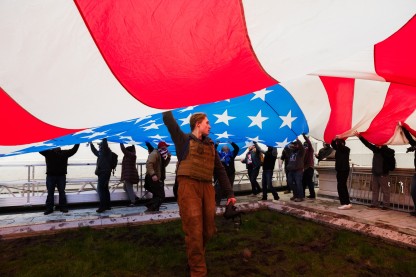
Jarring images from the January 6th insurrection in 2021. Image: Jon Cherry/Getty Images.
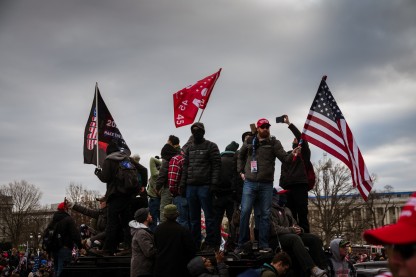
Jarring images from the January 6th insurrection in 2021. Image: Jon Cherry/Getty Images.
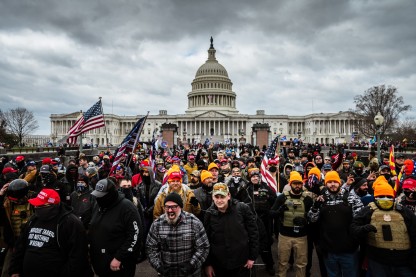
Jarring images from the January 6th insurrection in 2021. Image: Jon Cherry/Getty Images.
What other artists—contemporary or not—inspire your photography?
I was always I was always a big movie person. Spike Lee has always been a really big inspiration for me. As far as photographers go, pretty easy to always say Gordon Parks. He was like the first photographer that I’d ever really heard of. Whenever I look at his career and life and see all the different things that he did, you know, from being a fashionista to being a director to being one of the greatest documentary photographers ever lived and how his career took so many different forms. His ways of being like just an eclectic, empathetic and busy dude. I feel like I really connect with that. I think the ultimate inspiration, though, that I always feel is that of my colleagues. We have an amazing ability these days to be able tojust open up Instagram and have access to some of the best work ever produced. And I could look at, you know, multiple award winners. Not that awards mean anything, really, but like, look at incredibly inspiring work.
How does your identity as a Black, mixed man influence what images you want to capture?
For every photographer, who they are informs the direction that they point their camera in, right? And it affects the topic that they’re interested in. For me, I am really interested in the ripple effects of colonialism. How is it present today, although it has changed form? I am interested in holding the powers that be accountable. There are not a lot of people that look like me that are willing to go and do that kind of work. And I’ve had a lot of people, a lot of people within my own black community that have been upset with me for platforming the politicians or the extremists or the opinions that go against what what they want to see. But I think that we can’t shield ourselves from things that we don’t want to see. The subjects that I’m interested in are the things that I’m curious about, and I’d like to take the audience on my journey with me to see these things and see them in the way that I see them.
Do you have anything else you want to speak on? Tell the people what you have going on?
I have an exhibition, I always sell the pieces off and I always have a nonprofit of some sort that I fold into it so that they can be the benefactor of a portion of the sales. I recently had an experiential exhibit at the 21C Museum Hotel in Louisville. I’m selling off all of those pieces and splitting the profits with Appalachians for Appalachia because I do believe in finding ways to support those who do the work through the ways in which we photograph. So trying to sell off all those pieces, we’ve got 15 of them and sold two so far.
